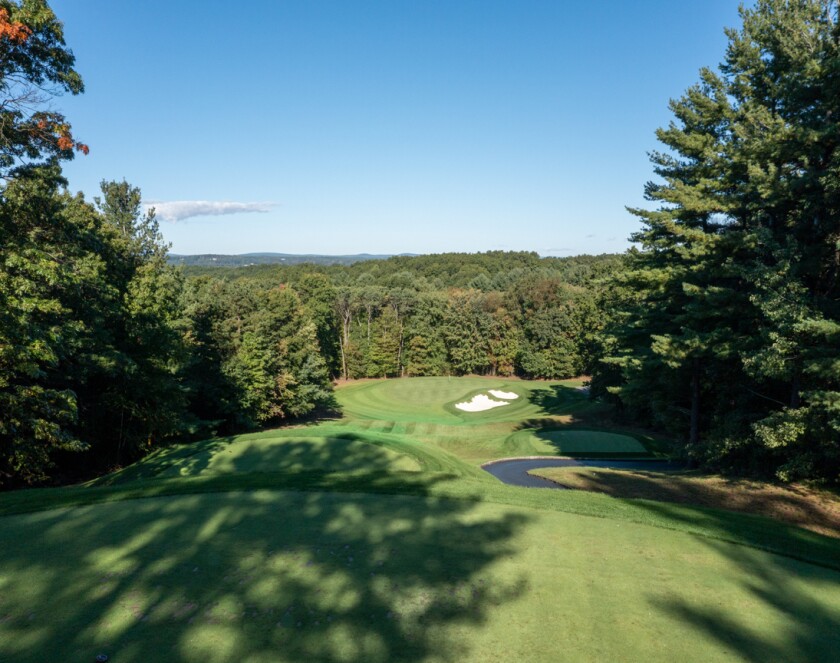
The latest news and notes in golf course architecture.
> BallenIsles Country Club in Palm Beach Gardens, Florida, broke ground in early April on a multi-million dollar renovation project tied to the club’s legendary East Course and the golf practice facility.
Course renovations will revolve around updating the course’s design, including bunkering, greens complexes and strategy, a complete re-grassing of the course and improvements to playing options for members and tournament players alike. The Nicklaus Design team, led by senior designers Chris Cochran and Chad Goetz, will also add length to the current 7,189-yard, par 72 layout.
In addition to the East Course renovations, the BallenIsles practice facilities are also being reimagined with new teeing grounds, target areas and practice greens. The new design incorporates modern-day practice areas and targets that will allow members to practice the wide variety of golf shots demanded on BallenIsles’ three championship courses. New short game practice areas, a pitch-and-putt course and a putting course are also part of the new practice facility. A new 3,500-square-foot Learning Center will include state-of-the-art technology and serve as an entry into golf, welcoming first-time players and professionals alike.
BallenIsles, a private club and community, was once known as PGA National, which was its name when Jack Nicklaus captured the only PGA Championship ever held in the month of February, back in 1971. That very course, always known as the East, was a 1963 Dick Wilson and Joe Lee creation that played host to many other significant events, including the PGA Team Championship and the Senior PGA Championship. Developed by John D. MacArthur, the facility later severed its ties with the PGA of America and its name then became JDM Country Club in 1973, which lasted until 1988. Whatever it was known as, in every era, the club and its championship East Course have always been held in high regard.
“It is exciting to work on this project, when just a year ago we were here celebrating the 50-year anniversary of Jack Nicklaus’ 1971 PGA victory and announcing our partnership with Nicklaus Design," said Ryan Walls, BallenIsles Country Club's general manager and chief operating officer. "Little did we know that we would be returning here, just a year later, to begin work. This is an important project for the club, as we continue to evolve the offerings to our membership and re-establish the East to its former glory, recognition and a great test of golf for all players.”
The renovation follows the construction of a $1.3 million pickleball complex in 2021; the 2020 redesign of BallenIsles’ South Course by Rees Jones; and a 2018 $35 million dollar clubhouse renovation. The club is now planning for a $15 million enhancement of its pool, sports complex and racquet sports center in 2023. All renovation work on the East Course is expected to be completed by December.

> The International Golf Club in Bolton, Massachusetts, was long renowned for its Pines course, a 1960s Geoffrey Cornish layout later modified by Robert Trent Jones that measured 8,325 yards — the longest course in the United States. Lesser known, but much admired, was the club’s second course, the Oaks, designed by Tom Fazio, that opened in 2001. However, both courses went to seed early in the pandemic period of 2020. In February 2021, Escalante Golf of Fort Worth, Texas, acquired the club out of bankruptcy and set about recapturing its former glories.
Currently, Coore and Crenshaw is redesigning the Pines, while Tripp Davis has recently completed work on the Oaks renovation, which reopened in May. Davis retained the Fazio routing, but he reworked the tee boxes into traditional rectangular shapes and redid bunkers to give the course a refined, yet “naturalistic” look, as Davis put it, with features more classical and more New England-like in appearance. Davis eliminated bunkers, added a few, and relocated others, along with installing overhanging grass edging on most of the bunkers. The course is set to host a LIV Golf event over Labor Day weekend.
> Following the successful debut of its first 10 holes in 2021, Oregon’s Bar Run Golf and RV Park is set to open its final eight holes in late summer 2022. Located in Roseburg, in the southwestern portion of the state (but not on the coast), Bar Run bears the design imprint of Dan Hixson, who has also authored Pacific Northwest gems such as Wine Valley in Washington and Bandon Crossing and Silvies Valley Ranch in Oregon. Hewn from a sand-and-gravel mine along the South Umpqua River, Bar Run features three holes that edge the river — 8, 10 and 11 — and other holes that incorporate machinery from a still-active mining operation.
> Metedeconk National Golf Club, one of the finest low-key, yet most demanding layouts ever built by Robert Trent Jones, is basking in the glow of a recently completed Raymond Hearn renovation project.
Set on the edge of New Jersey’s Pine Barrens, roughly halfway between New York City and Philadelphia, Metedeconk opened 18 holes in 1987, with Jones and senior designer Roger Rulewich adding a third nine in 1998. The Michigan-based Hearn ventured east and aligned with Metedeconk president Fred Price, general manager Derek Kopp, green committee chairman Rob Bakos and superintendent Andrew Mallick in performing the work.
“It was a great team effort,” said Hearn. “I could not be more pleased with how things turned out. Strategy and shot values were enhanced on every hole with regards to current hitting distances that have increased since the club’s original opening.”
Hearn restored vintage Jones tattered-edge capes and bays to bunkers, which had been lost over time, while also instilling variety into the holes that wasn’t always present at the onset.
“Ray fully respected the legacy of Jones,” said Bakos. “Strategy, shot value and course aesthetics were all dramatically increased. The remodeled bunkers really brought our aging golf course to life and the enhanced fairway contours and greenside runoff areas are bold and dramatic.”
Hearn understood that respecting the original design was critical, but he also recognized that certain changes would enhance the experience for modern tastes.
“A respectful renovation provides an opportunity to improve two elements I consider paramount to design: angles and options,” said Hearn. “While we were restoring the course to its original glory, we also found ways to refine and increase strategy and shot value with more angles and options. Overall, the original design intent of Jones was safeguarded, but as Price would say, ‘creatively tweaked.’”










